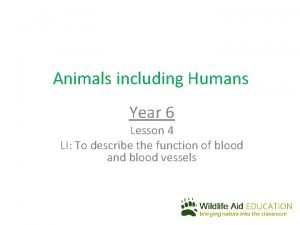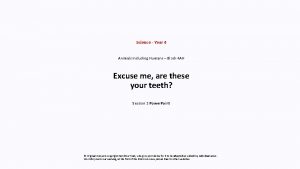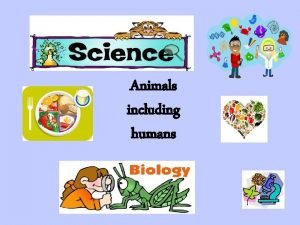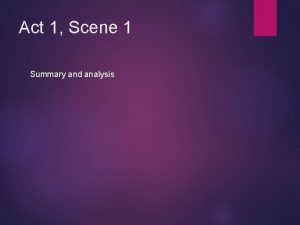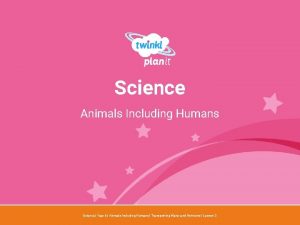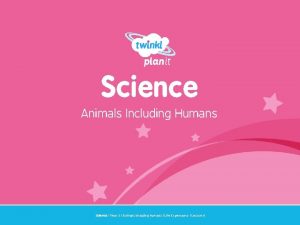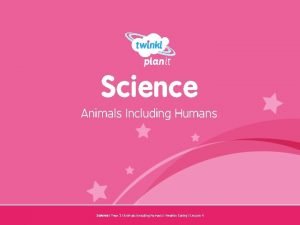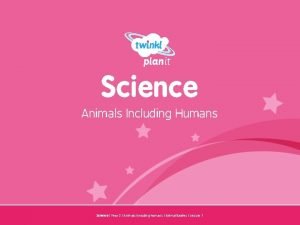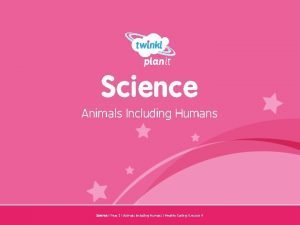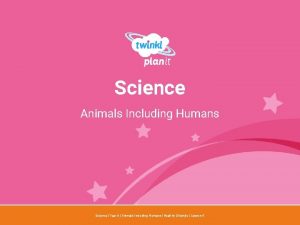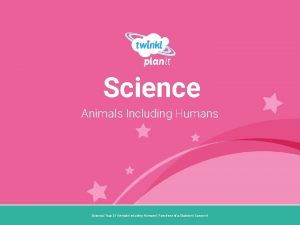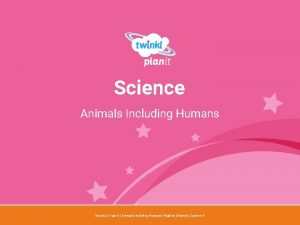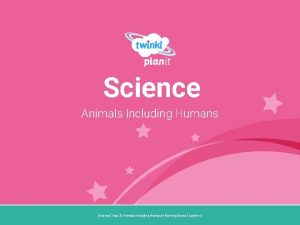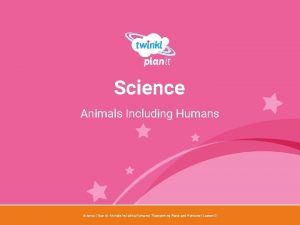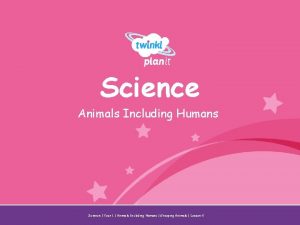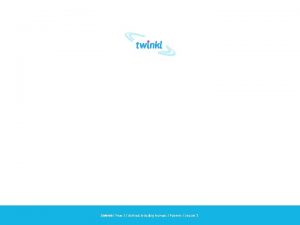Science Animals Including Humans Year One Science Year














- Slides: 14

Science Animals Including Humans Year One Science | Year 6 | Animals Including Humans | The Circulatory System: Parts | Lesson 1


Look at page 11 of your booklet. You have 5 minutes to see what you know! Your time starts now!

• To revise the bones of the body. • I can identify and name the parts of the human circulatory system. • I can identify different bones in the human body and explain some of their functions. • I can identify the parts of the circulatory system. • I can name the parts of the circulatory system.


Skeletal system Muscular system Nervous system Digestive system Renal system Circulatory Respiratory system

Click on the picture to see a labelled diagram of the skeleton. To find out more, have a look at this interactive diagram of the human skeleton: https: //www. dkfindout. com/uk/human body/skeleton and bones/skeleton/ Click here to see diagram Click on picture to hide

Have a think: What do you think the system does? Do you know the names of any parts of the system?

What can you see? Is this what you expected? Are there parts you did not expect to be in the circulatory system?

The heart is a powerful organ that is situated between your lungs and protected by the ribcage. The heart pumps blood to the lungs to get oxygen. Click me for a larger version! Click anywhere to hide. The heart then pumps this oxygenated blood around the body. The heart is split between the left and right side. As you can see, it consists of many parts! Click me for a larger version! Click anywhere to hide.

Click me for a larger version! Air breathed in through the mouth or nose travels down the trachea, through the bronchi into one of the lungs. The air travels into the bronchioles and into the air sacs (alveoli). From here, the gas is able to pass in to the bloodstream. Click anywhere to hide.

vein artery capillaries Blood vessels can be split into three types: Arterial blood vessels arteries: Arteries are blood vessels that carry blood away from the heart. Venous blood vessels veins: Veins are blood vessels that carry blood to the heart. Capillaries: These are the smallest blood vessels. Capillaries connect the arteries and the veins and are the place where water and chemicals exchange in the blood. Click anywhere Click here for a diagram that shows to how hide. the three blood vessels are linked.

Complete page 3 in your booklet about the circulatory system.

 Animals including humans year 6
Animals including humans year 6 Animals including humans year 4
Animals including humans year 4 Animals including humans clipart
Animals including humans clipart Https://a-z-animals.com/
Https://a-z-animals.com/ Animals that eat both plants and animals
Animals that eat both plants and animals Parasitic food chain
Parasitic food chain Carnivore
Carnivore Act 1 scene 1 hamlet
Act 1 scene 1 hamlet One empire one god one emperor
One empire one god one emperor One one one little puppy run
One one one little puppy run One king one law one faith
One king one law one faith One empire one god one emperor
One empire one god one emperor One team one plan one goal
One team one plan one goal See one do one teach one
See one do one teach one One price policy
One price policy
